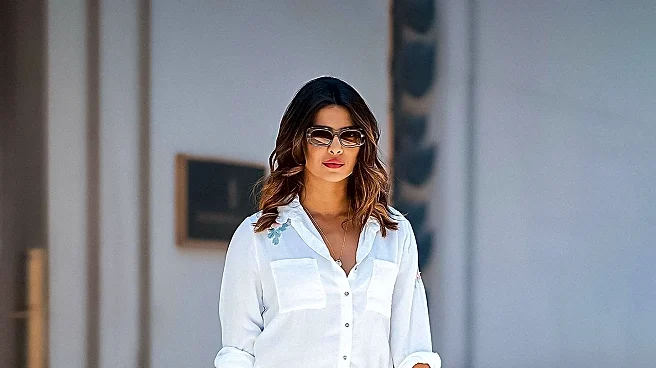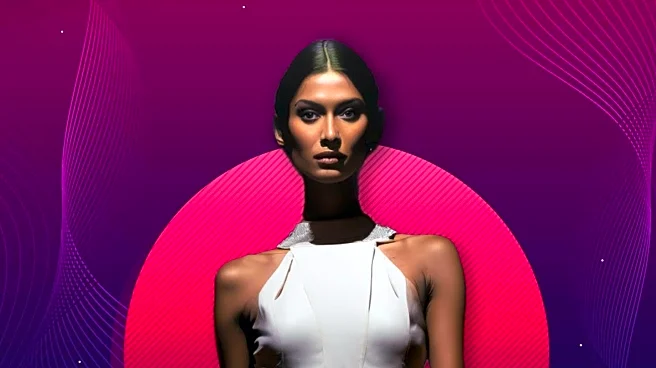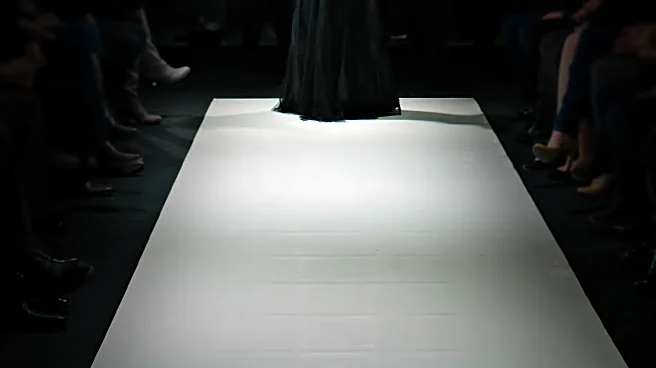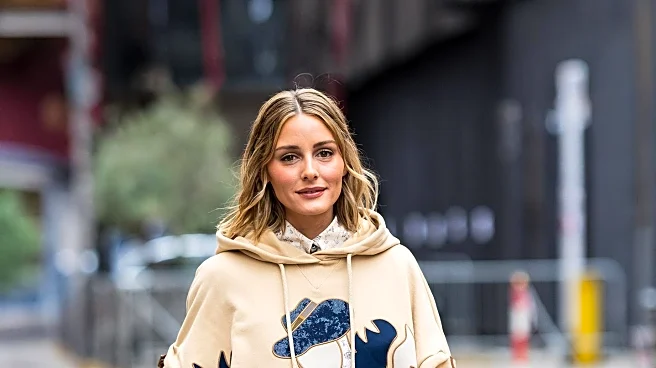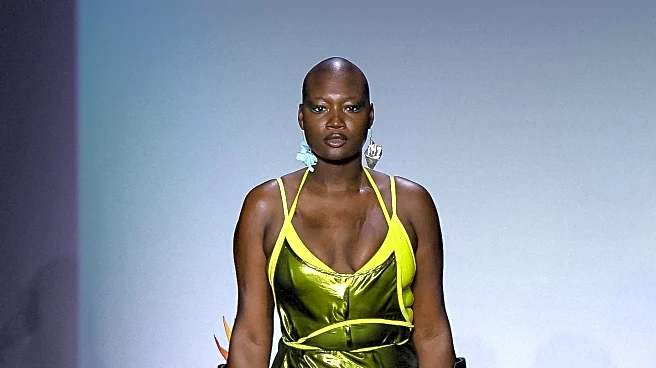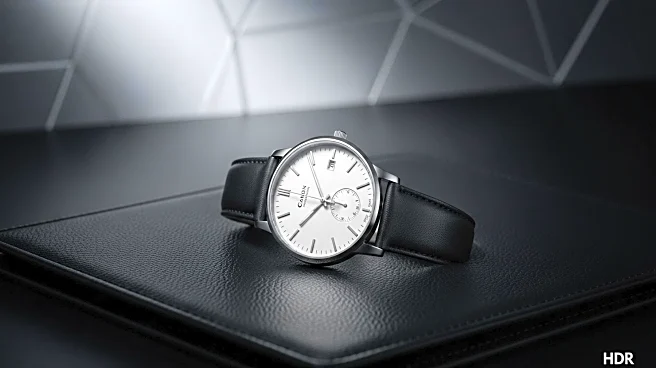What's Happening?
The fashion industry continues to grapple with the inclusion of plus size representation, as highlighted by recent statistics from the Spring/Summer 2025 runways. Despite the industry's claims of seeking innovation and impact, only 0.8% of the 8,763 looks presented across major fashion weeks in New York, London, Milan, and Paris were plus size (US 14+). This marks a significant decline from previous years, such as Spring/Summer 2020, where 86 plus size models were featured. The lack of representation is stark, especially when considering the booming plus size fashion market, valued at $119.4 billion in 2024 and projected to grow to $202.4 billion by 2034. Social media platforms like Instagram and TikTok have become the real runways for plus size influencers, who are building communities and challenging traditional fashion norms.
Why It's Important?
The underrepresentation of plus size individuals in high fashion has broader implications for societal norms and the fashion industry's economic potential. The plus size market is not only substantial but also growing, driven by consumers demanding styles that reflect their identities. The industry's reluctance to embrace this demographic fully suggests a disconnect between market realities and traditional fashion gatekeeping. This lack of representation also impacts mental health, as weight stigma is linked to anxiety and depression. The rise of body positivity and neutrality movements on social media underscores the demand for more inclusive representation, which can foster a sense of belonging and self-worth among marginalized groups.
What's Next?
To turn the current revolutionary moment into a sustained reality, the fashion industry must move beyond tokenism and embrace genuine inclusivity. This involves expanding size ranges, improving fit, and ensuring diverse casting in campaigns. Consumers are encouraged to support brands that align with these values and to continue advocating for change. The industry must recognize that inclusion is not a trend but a necessary evolution to remain relevant and economically viable. As more individuals and brands take ownership of their representation, the pressure on traditional fashion institutions to adapt will likely increase.
Beyond the Headlines
The conversation around plus size representation also touches on intersectionality, highlighting how race, gender, and body size intersect to shape visibility and opportunity. Not all plus size bodies are celebrated equally, and the industry must address these disparities to achieve true inclusivity. The shift towards body neutrality, which emphasizes respect over aesthetic validation, represents a nuanced evolution in the discourse around body image. This shift is particularly significant for those facing multiple layers of stigma, offering a more inclusive framework for self-acceptance.



